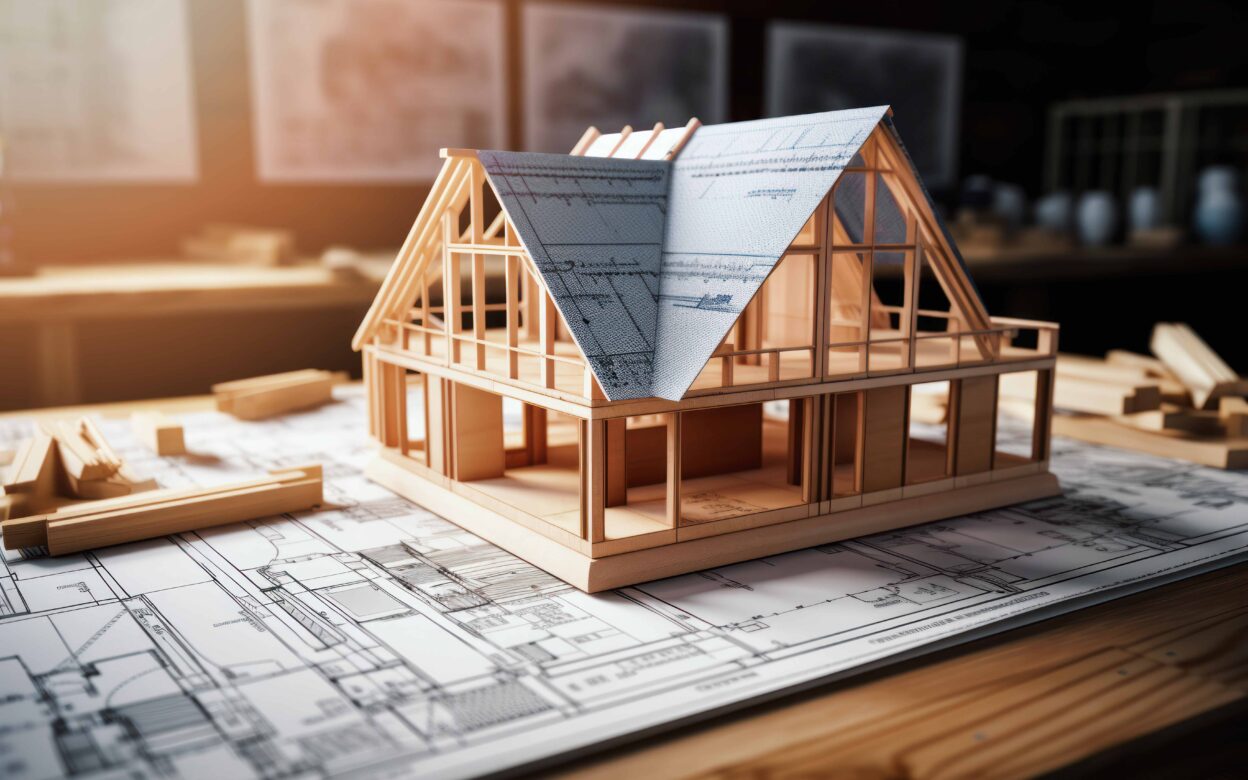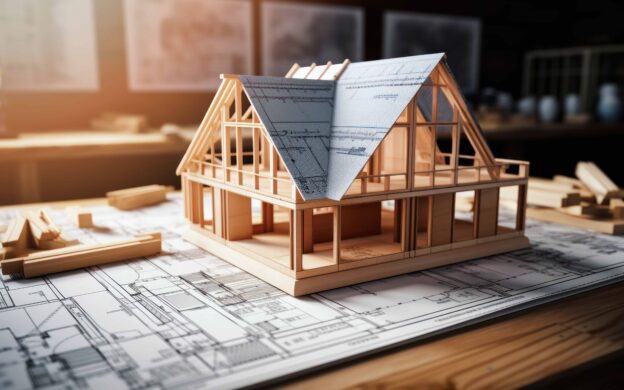
“The UK needs to build more houses and, with construction rates falling below housing needs for the last decade, it needs to build them fast,” he said. “There has been a particular shortfall in affordable homes, so that’s one area where construction needs to especially focus on. New homes also need to be energy efficient in use, and low carbon in construction, as government regulation of the sector is increasingly shaped by net zero emissions targets.” All of which, he concludes, points to timber frame construction becoming an increasingly significant UK house building approach.
Massive UK timber frame investment
That view is clearly shared by the country’s housing construction giants, judging by developments this year. Barratt has announced construction of a new £45 million timber frame factory, which it says will help it meet the government’s new energy efficiency, low waste-focused Future Homes Standard (FHS). Taylor Wimpey is investing in a fully automated new timber frame plant, while Persimmon has recently secured planning permission for a new facility for its Space4 timber frame division, which will be the largest of its kind in the UK.
The UK government is also putting its faith in timber-based building. In 2021 it formed the Timber in Construction (TiC) Working Group, comprising representatives of government departments for timber and timber frame industries. Its role is to ‘identify actions needed to increase construction of timber and wood-hybrid homes’. In conjunction, the TiC Innovation Fund’s intention is ‘to increase and facilitate use of home-grown wood in construction’.
Arctek® Dryshell™ supports timber frame build efficiency
It’s against this backdrop, said Brian, that US-based Arclin sees strong prospects for its Arctek® Dryshell™ moisture and vapour control overlay for wood-based panels in the UK house building market.
“Arctek® Dryshell™ has been developed for timber frame construction as a high-performance alternative to vapour control membranes such as plastic based housewraps,” he said. “These housewraps are manually fixed on building sites. Arctek® Dryshell™ in comparison is applied to timber panel products, notably timber frame walls and roofs, SIP systems and cassettes, in the panel producers’ and processors’ factories. This offsite manufacturing process results in uniform vapour control and water protection across the timber frame panel and a more efficient timber frame build process. It’s a product designed to further raise the quality and performance of timber frame housing and, we believe, it can support the increase in timber frame’s construction in the UK.”

UK government in drive to decarbonise construction
The drive to timber building is clearly given added impetus by increasing government and consequent industry focus on sustainability. “Construction is estimated to account for around 40% of man-made emissions globally,” said Brian. “So decarbonising the sector is core to UK government net zero strategies – hence the revision of building regulations within the FHS. And timber frame is acknowledged as a prime low carbon build solution. Timber absorbs CO2 while growing and stores it for life. Timber frame panels also deliver high levels of insulation, while wood itself is a natural insulant.”
Timber Frame the perfect partner to offsite construction
The other way forward for construction, he added, given its capacity to deliver quality, affordable and sustainable homes rapidly and efficiently, is increasingly seen as offsite modern methods of construction. And, given its strength to weight and ease of processing, timber is seen as an ideal material for offsite building manufacture – evidence of which is this latest wave of new offsite timber frame factories announced by the house building majors.
The government is getting behind this form of construction too, setting up the £10 billion offsite framework to support growth. “The picture today, as a result of developments in recent years, is that around 25% of new UK homes are timber frame, while the figure is around 90% in Scotland, where the combination of Scottish weather and timber frame’s speed of build adds to its appeal,” said Brian. “And an MTW report sees a ‘real possibility’ of the UK’s annual timber frame market hitting £1 billion.”
Arctek® Dryshell™ the solution for timber frame
The one vulnerability of wood in construction is moisture, which can compromise technical performance. But that, said Brian, is where Arctek® Dryshell™ provides the answer. “Timber-based panels used in open and closed panel timber-based construction naturally need moisture protection during construction. They also need a permeable vapour-control layer to let humidity escape the building envelope and prevent interstitial condensation” he said. “Arctek® Dryshell™, which is based on a technology that’s long-established and extensively used in America, delivers both. It’s a vapour permeable, water-resistant material which is thermally fused to timber-based panels and being factory-applied means the process is completed in a climate and quality-controlled environment.”
“As Arctek® Dryshell™ overlay panels have vapour control and moisture protection in place, they help achieve a weathertight building shell faster than is possible with site-applied membranes. They improve building airtightness too,” said Brian. “Arctek® Dryshell™ is also ideally suited to offsite, modern methods of construction, it accentuates their benefits in terms of quality control and rapid timber frame panel fabrication.”
To find out more about how Arctek® Dryshell™ can benefit your timber frame projects and help you to take greater advantage of the growing timber frame market in the UK, request a sample or talk to us.


